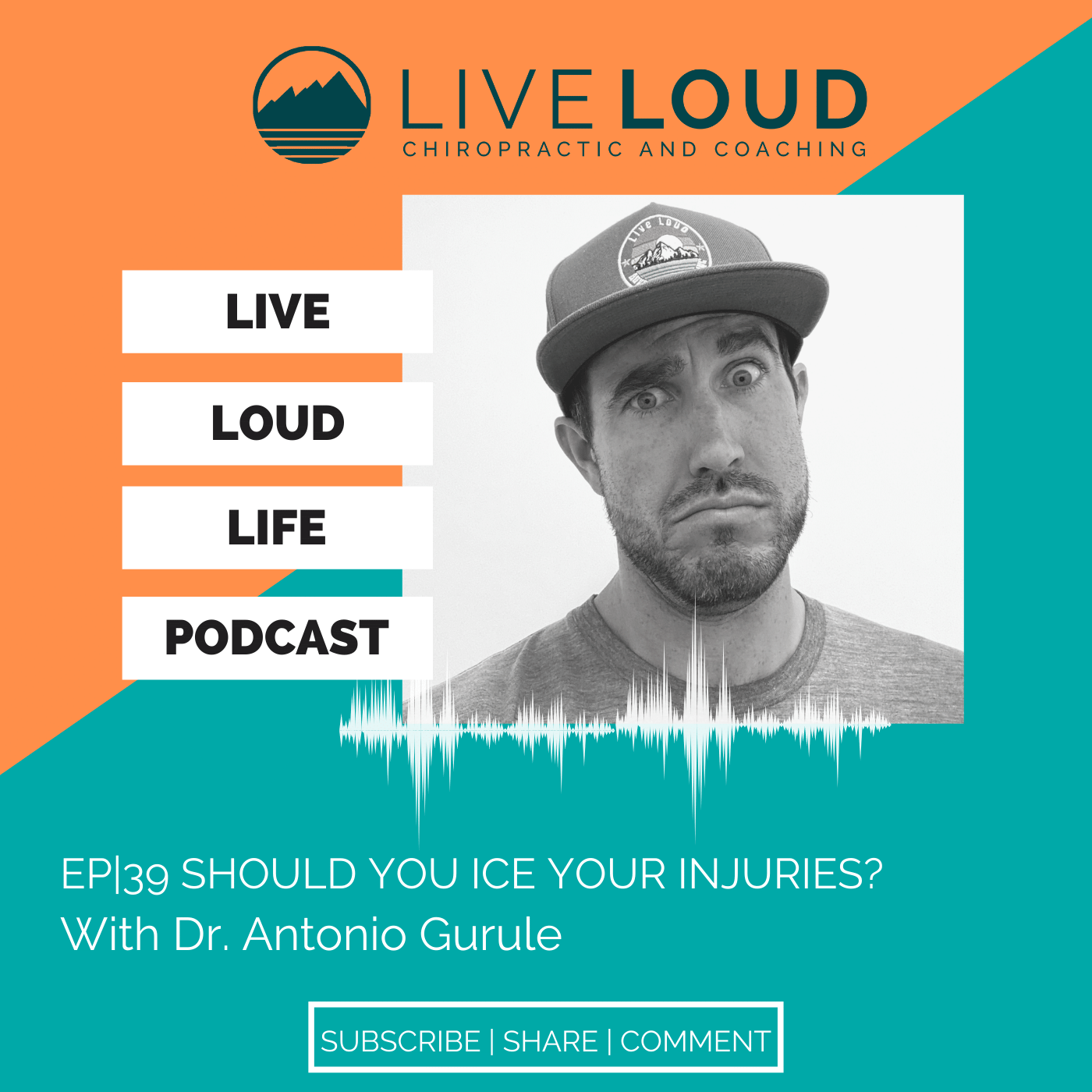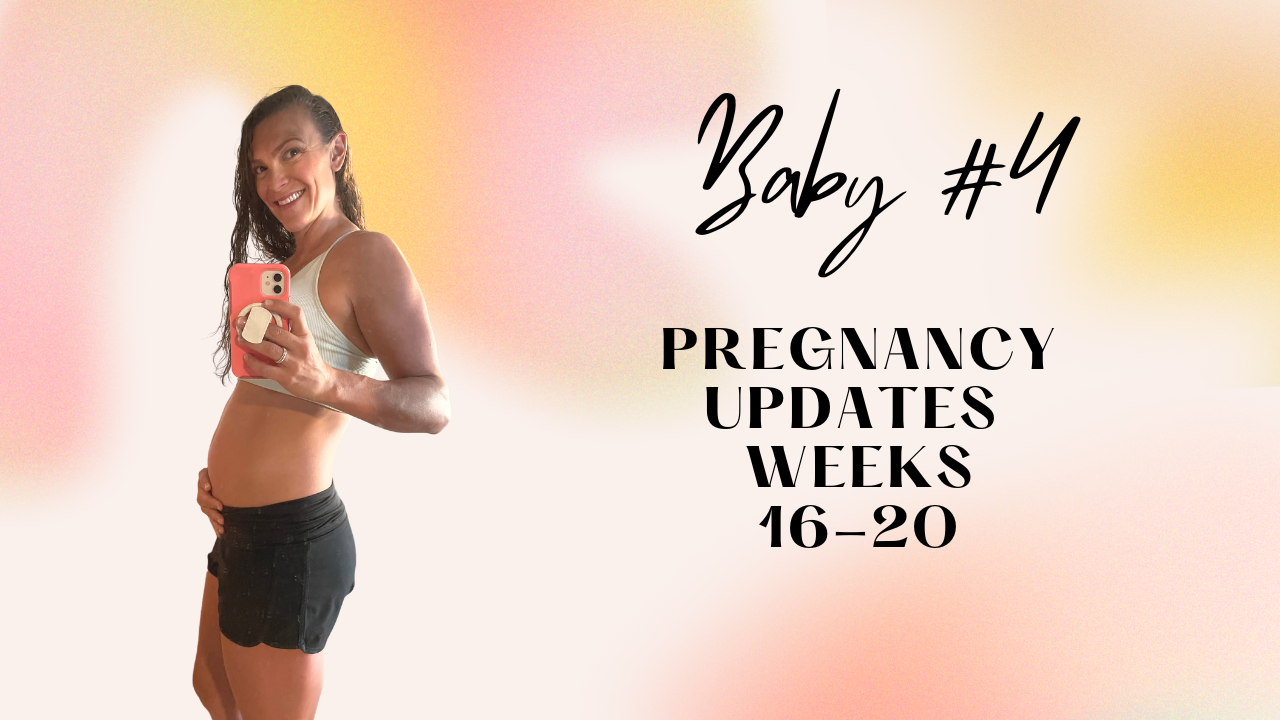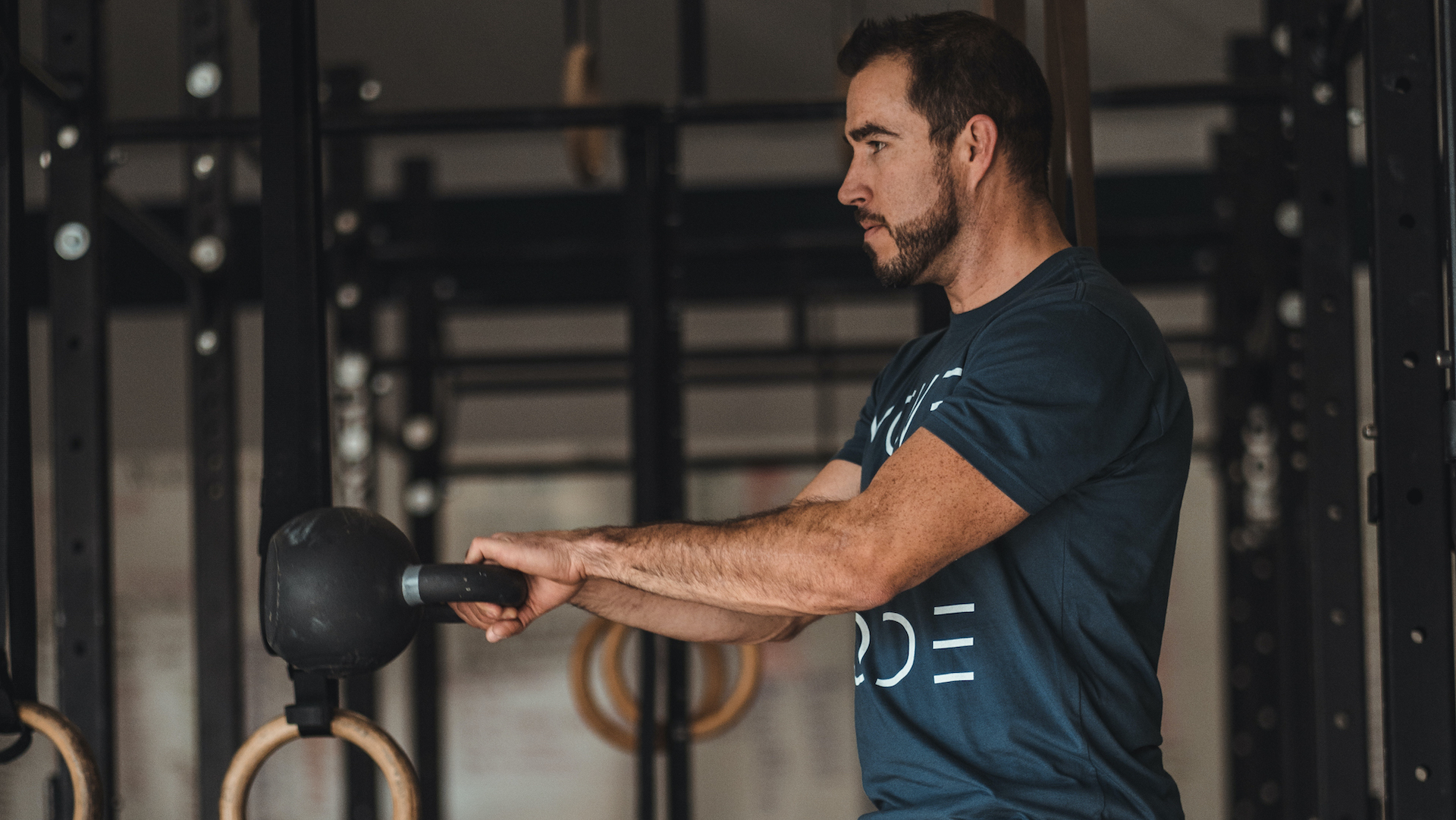Condition Series: How To Treat Neck Pain
Typically, it’s estimated that roughly three out of 10 people currently are experiencing some form of neck pain, discomfort, or upper back pain. Now, based on how we live in Western society, I actually think it’s slightly more. But there’s a lot of reasons from that as to why we think this is happening.
Now, argumentatively we’ve been reading books and reading newspapers and looking down for many years outside of the cell phone, but with the way modern technology is and how much more time we actually spend on computers, we’re actually seeing our world lives in this box. Right? Currently, you are watching this video on an iPad or an iPhone or your computer and our world lives right here. We very rarely, often look outside of this box where we live in. And that is, I think, a lot of the reason why we are experiencing a lot of neck pain.
Now, what do we do about that?
My name is Dr. Antonio, I am the owner here with my wife of Live Loud Chiropractic and Coaching. We are based out of Lafayette, Colorado, in Boulder County. Our big focus is to help guide you to the adventurous life you are made for, to help build stronger families and a stronger community.
Now, that is oftentimes very challenging when you’re dealing with pain. So not only are we trying to push and be very proactive about an active lifestyle, sometimes we have to deal with the pain and discomfort that is preventing us from enhancing our life and being able to do the things that we want to do.
PLAY VIDEO ⬇︎
The Problem with Neck Pain
Now neck pain is one of those things that really wreak havoc on people’s lifestyles and their daily activities because so much of our proprioception and awareness, and our senses come through our head. If you can’t turn your head and your neck very well, it’s very hard to see, it’s very hard to hear when you want to be able to turn your head, right? So these are the important things that we want to address when we’re looking at neck pain.
Now, as we always state, we are very much about setting an example about a patient, active care model, meaning we need you to move–we need you to play an active role in this process. It is not simply just adjust, soft tissue work, and all of a sudden things go away. Because what you have to know and consider is outside of major trauma; major trauma–automobile accidents, falls, so on and so forth. There is a reason why you are starting to feel neck pain.
What does that mean? Well, it might be the way you’re sitting eight hours a day, it might be the way that you’re moving, it might be the way that you’re exercising. We have to determine what changes need to be made. Because if I simply just do adjustments and soft tissue work, and you go back to the same lifestyle that got you here, what’s to say it’s not going to happen again?
Our role is to make sure that you’re set up for success. Not just turn into this model, which is adjust, fix something which makes it feel good. Come back when it hurts. That’s the old model. That’s the old chiropractic model. That’s the old PT model. It’s very much a band-aid. “I Hope the pain gets better, come back and see me when it’s getting worse.”
I want to set our patients up for success. And I know you want success too. What is success? Well what are the goals you want to be able to do? Hike, walk, play with your kids, wrestle, jujitsu, weightlifting, I don’t know, it doesn’t matter what it is, but we want to meet you where you are to get there.
Now, as we already stated, changes need to be made. If we don’t change the behavior or the lifestyle that elicited the pain in the first place, again, outside of trauma, then we’re not going to get anywhere. So what we’re going to do today is walk you through what a what a neck complaint, examination and assessment looks like, and the common ways that we help treat neck pain.
Treating Neck Pain
Now, I’ll say it again, what we do is layered on top of everything else. What does that mean? Well, I can do adjustments, I can do soft tissue care. Whether that’s MRT, whether that’s dry needling, or cupping, etc. And then that’s going to be only supplemental to the active care model that we would need you to be a participant in.
What does that mean? Well rehab care might include strengthening exercises, very commonly for the neck, this is strengthening the upper back with more pulling. We’re going to talk about posture awareness. We are not very strict on posture, but we like to highlight the role in which posture plays with neck pain so that you have a better awareness about how it influences it. When you have more awareness and you understand it then it’s going to apply better rather than simply saying, “you need to have better posture.”
We oftentimes get so many people saying I know my posture sucks, but they don’t even know what to do about it, or why it sucks and what that means. So that’s going to be part of the process and part of the conversation.
But today’s video is simply to help show you how we go about this and some of the ways that we can help someone with neck pain, address the issue, set up a plan, and more importantly, look at that end range goal, and to help build that plan to the end range goal outside of just slapping on band aids and saying come back when it hurts.
So if you have neck pain, I know this video will be very important to you and will have a lot of great tips of showing you what a proper assessment, evaluation, and treatment plan should look like. And if you have a loved one, family friend, or co worker that has been experiencing neck pain, you peek over and they’re always rubbing their neck or doing something like this, I highly encourage you to share this with them. This is something that can really change someone’s life by getting the right direction, and the right care, and the right provider to help dig them out of this hole, which can sometimes feel very daunting. So thanks for tuning in, guys, and I hope you enjoy.
Examination Process for Neck Pain
There’s a number of different ways in which neck pain can start. But again, outside of trauma, there’s usually a reason or an indication as to why it’s happening. And that’s first and foremost what we have to understand and discuss with the patient through our consultations and our history and the examination. But now what we’re going to be doing is actually breaking down the examination process.
1. Sit up nice and tall and bring chin to sternum.
Perfect, we look at how does everything flex over? How does everything look on the backside? Any pain?
2. Look up towards the ceiling and extend back as far as you can.
This one’s always interesting, right? As we already indicated, everything we look at is in front of us. very rarely are we looking completely up, completely down, or over to the side, right? Even when we’re looking at our phones, it’s never just straight down. So we want to start looking at those end range positions to see how much mobility do we have there, And does it elicit pain?
3. Look all the way over right shoulder. Then look all the way over left shoulder.
4. Ear to shoulder, ear to shoulder.
What we commonly see, right, people think ear to shoulder, that’s the same thing, that’s shoulder to ear. We want to look at pure cervical range of motion.
5. Take the right hand, reach behind her head and touch the shoulder blade.
Switch sides. Oftentimes, you see a lot of upper trap tension with neck pains, we want to see how does her shoulder mechanics work since the upper traps are such a major player with shoulder mechanics.
6. Now I’m going to push down on the spine there, check for symptoms.
7. Then I move the head sideways, add compression, and then tip it back a little bit, add compression and then just straight back, add compression.
Okay, so next, if that is the case, if someone having this pain down their arm, then we can look at does distraction improve it. So I’m simply just trying to lengthen her spine there. For some of you that are having ridiculer pain down your arm or a pinched nerve better known as, this could elicit a response of improvement and that would be a good sign, and something important for us to know.
So that’s how we differentiate the type of pain that we have. We’re dealing with localized joint pain or something more of a pinched nerve that’s going down the arm.
Non-Weight Bearing Evaluation for Neck Pain
This allows me to palpate and feel how the joints move and operate. So if someone during their active range of motion have them moving themselves, they don’t have a lot of good range of motion, I can now test it non-weight bearing to see if it feels any different.
Start to feel around. This allows me through my hands to feel if there’s specific areas that seem to be stuck, or kinked, if you will, and that’s where we’re going to try to focus our treatment. that treatment could be the active treatment that we give her, or the manual treatment that we’re going to do for her.
Ask for any tender spots, how does that feel? Because that’s going to give us an idea of certain muscle groups or muscle bellies that need to be addressed.
- Soft tissue work
- Dry needling
- Cupping
- Manual therapy
We’ll be doing our standard adjustments, which would have been essentially be if I feel stuck spot, I’m going to basically just try to have a wiggle. And we’re just going to do small adjustments like that. Very light, very delicate adjustments, that elicit movement in the stuck joints where we need them to start moving.
Now outside of that, right, we have to look at the movement side. So here’s a few things that we do.
Movements to Help with Neck Pain
-
Chin Tucks
simply put, your chin is going to move back and forth like it’s on a drawer slide again, a drawer side does not go up and down, it simply goes forward and backwards.
What we want to make sure is just the head is kind of tilting and moving back and forth to allow the chin to move back and forth. We don’t want to see a lot of movement from the back or the lower back or the mid back from here, it should be simply just coming back and forth from the chin.
Now similar to what we did for our lower back exercises, sets of 12, 15 and 20 seem to be a sweet spot.
Movement mapping is exploring all the corners of range of motion that your neck should have. We don’t force any range of motion, but this gives us a good proprioceptive awareness and map of what range of motion is limited.
What this looks like: we start off with just the basic cue. So chin down, chin up. Chin down, chin up, we get an idea of what we’re doing. Now we’re gonna say go chin down and hold. Okay, now I want you to turn your head like you’re saying no when you’re down. So we can take all those joints through flexion. And now add some rotation, well, what we can then do is go down again, and we can say ear to shoulder. Right, so now it’s a little bit more lateral flexion.
Now, we can combine all of those together and say, chin down, ear to shoulder. Now, hold that and then turn no. But we’re really challenging a lot of the joints within the neck to see what their movement is. And this is actually very therapeutic, because we’re starting to loosen up a lot of the tight joints that have not moved in a certain way, in a long time, more range of motion that you have and more mobility, oftentimes, you’ll see a significant reduction in pain as itself.
-
The Dissociation Exercise
in addition to what we just described as the upper back strength, having significant influence with neck range of motion, we can now dissociate those two movements, so that we can make sure that the neck can move independently of the upper back. All you need is a band.
Hold one end of each band, straight arm pull the arms away from each other. Hold back here. So now in doing this, you feel all these muscles are tight, right? So it’s gonna feel a little weird. But now move your head by almost doing that same kind of movement mapping side to side up and down.
So here we’re setting the stabilizers, we’re setting the back the way that it should be set, and then we’re asking the neck to move independently, which helps loosen up a lot of the tight joints and muscles that are dependent on that upper back support.
Conclusion
It always starts with proper evaluation and a movement criterion first to determine what triggers are constantly picking and irritating at it so we get out of that negative feedback loop. Then we put on the movements, the movement mapping the chin, tuck some of the basic things that help you scrub out and maintain better range of motion within the neck joints and muscles, as well as then layering on the soft tissue care whether that’s MRT, dry needling, cupping, and adjustments to help sweeten the deal and supplement more motion and more pain reduction, if you will.
So if you are dealing with neck pain, I’ve been there. We’ve been there. it sucks but it really limits a lot that you can do. And no one wants to walk around all day all stiff-neck not being able to drive and do other things. So if you’ve been dealing with this for a while, please, please give us a call. We’d love to help take you through this good evaluation and help you set you up with a better plan of success. Once and for all, stop neck pain.




